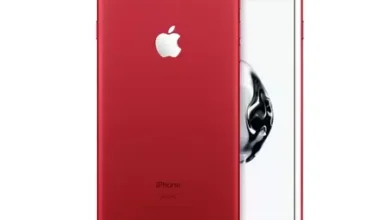T-Mobile: A Deep Dive Into One of America’s Most Disruptive Carriers

Introduction to T-Mobile
T_Mobile When you think about wireless carriers in the United States, T-Mobile almost always comes to mind. Known for its bold marketing campaigns, pink branding, and “Un-carrier” approach, T-Mobile has carved out a reputation as a company that isn’t afraid to challenge industry norms. Over the years, the carrier has managed to go from being an underdog in the market to one of the top wireless providers in the nation.
At its core, T-Mobile is all about offering simplicity, flexibility, and innovation to its customers. The brand is recognized for shaking up traditional pricing models, removing hidden fees, and bringing fresh ideas like unlimited data to the mainstream. Unlike its competitors, T-Mobile thrives on positioning itself as customer-first, building loyalty by addressing consumer frustrations head-on.
If you’ve ever wondered why T-Mobile continues to gain ground while other carriers struggle to keep up, it all boils down to its forward-thinking strategies, relentless expansion, and customer-driven values. In this article, we’ll take a closer look at T-Mobile, its history, services, and the reasons behind its massive success.
A Brief History of T-Mobile
T-Mobile’s roots trace back to Deutsche Telekom, its parent company in Germany. The brand entered the U.S. market in the early 2000s, initially struggling to compete against giants like Verizon and AT&T. Back then, T-Mobile was known more as the budget-friendly alternative, with fewer towers and coverage gaps compared to the big players.
Things began to shift when the company decided to redefine what a wireless carrier should look like. By focusing on transparency and customer-friendly policies, T-Mobile launched the “Un-carrier” movement in 2013. This campaign completely disrupted the traditional mobile industry, challenging common practices like annual service contracts and high roaming fees.
Fast forward to today, T-Mobile is no longer the underdog. With the acquisition of Sprint in 2020, the company expanded its reach dramatically, giving it access to new markets and a more robust infrastructure. This merger solidified T-Mobile’s position as one of the top three carriers in the U.S., capable of going head-to-head with Verizon and AT&T.
The “Un-Carrier” Revolution
One of T-Mobile’s boldest moves was the launch of its “Un-carrier” strategy, which was all about solving customer pain points. The company recognized that people were frustrated with hidden fees, data limits, and complicated contracts. So, it took a completely different path—one that put power back in the hands of consumers.
Instead of long-term service agreements, T-Mobile introduced no-contract plans, giving customers the freedom to leave whenever they wanted. This was a major game-changer at the time, as it forced other carriers to rethink their own models. The company also made international roaming more accessible by including it in standard plans, which was unheard of back then.
Perhaps one of the biggest innovations was T-Mobile’s unlimited data plans. While other carriers were charging premiums or throttling speeds, T-Mobile offered affordable unlimited options, cementing its image as a carrier that truly understood modern mobile needs. The “Un-carrier” movement didn’t just help T-Mobile grow—it reshaped the entire wireless industry.
T-Mobile’s Network and 5G Expansion
Network quality is one of the most important factors when choosing a wireless carrier, and T-Mobile has invested heavily in improving its coverage. Over the last decade, the company has built a strong reputation for offering reliable nationwide service, especially after its merger with Sprint.
One of T-Mobile’s standout strengths is its early leadership in 5G technology. While Verizon and AT&T were focused on launching 5G in select cities, T-Mobile rolled out a nationwide 5G network, making it accessible to millions of customers right from the start. The carrier’s mid-band 5G spectrum (sometimes called “layer cake” 5G) balances speed and coverage, giving users a better experience than the ultra-fast but limited mmWave technology used by rivals.
Today, T-Mobile’s 5G network is considered one of the most expansive in the U.S. This aggressive rollout strategy has positioned the company as the go-to option for people who want cutting-edge technology without waiting years for it to expand. The network improvements also help T-Mobile attract more rural customers, an area where it used to lag behind.
Plans and Pricing: What Makes T-Mobile Stand Out
T-Mobile has always been known for competitive and straightforward pricing. Unlike some competitors, the carrier avoids overly complex tiers and hidden charges. Most of its plans include taxes and fees in the advertised price, which makes budgeting easier for customers.
The company’s Magenta and Magenta MAX plans have become especially popular. These options offer unlimited talk, text, and data, plus perks like Netflix subscriptions, international texting, and in-flight Wi-Fi on certain airlines. By bundling value-added services, T-Mobile makes its plans feel more like lifestyle packages than just phone service.
Another big win for T-Mobile is its family plan pricing. Families or groups can save significantly by bundling multiple lines, making it one of the most cost-effective choices for households. When you compare the cost-to-benefit ratio with other carriers, T-Mobile consistently comes out as one of the best deals in the market.
Customer Service and Brand Loyalty
Customer service has long been a weak spot for the wireless industry, but T-Mobile has managed to build a better reputation than most of its competitors. The company emphasizes a “Team of Experts” approach, where customers are connected to smaller, specialized support teams instead of being bounced around a call center maze.
This personalized touch goes a long way in building trust and loyalty. Customers often report faster resolutions, friendlier interactions, and less frustration overall when dealing with T-Mobile support compared to other carriers. It’s a strategy that not only solves problems but also strengthens brand identity.
Beyond customer service, T-Mobile invests heavily in building a community around its brand. Programs like “T-Mobile Tuesdays” reward customers with discounts, freebies, and giveaways, making subscribers feel valued. This kind of customer-first philosophy is rare in the industry and a big reason why T-Mobile’s churn rate (the rate at which customers leave) is consistently lower than many competitors.
T-Mobile’s Role in Innovation
Aside from network expansion and pricing, T-Mobile is also a leader in innovation. The company has been proactive in exploring new ways to integrate wireless technology into everyday life. Its push into home internet services is a great example. By leveraging its 5G network, T-Mobile offers wireless home internet, giving rural and underserved areas an alternative to traditional broadband.
The carrier has also embraced partnerships that expand its offerings. From collaborations with streaming platforms to deals with airlines, T-Mobile constantly looks for ways to enhance the value of its services. This approach has helped the brand evolve from just a mobile carrier into a more holistic digital lifestyle company.
Even in sustainability and corporate responsibility, T-Mobile stands out. The company has committed to using 100% renewable energy and has implemented eco-friendly initiatives, further aligning itself with the values of its customer base.
Challenges T-Mobile Still Faces
Despite its impressive growth, T-Mobile isn’t without challenges. Coverage in some rural areas still lags behind Verizon’s well-established network. While its 5G expansion has been successful, there are still gaps that need to be filled for truly seamless nationwide service.
Competition remains fierce, especially with Verizon and AT&T investing billions into their networks. Pricing wars are also constant, meaning T-Mobile has to continuously balance affordability with profitability. Another challenge lies in maintaining customer service quality as the company scales. Larger customer bases often strain resources, and T-Mobile will need to keep innovating to stay ahead.
That said, T-Mobile has shown time and again that it knows how to adapt. Its history of turning weaknesses into strengths suggests that it’s more than capable of addressing these hurdles in the years to come.
Conclusion: Why T-Mobile Continues to Win Hearts
T-Mobile’s rise to the top of the wireless industry is nothing short of impressive. From its humble beginnings to becoming a powerhouse carrier, the brand has consistently found ways to challenge the status quo. By focusing on transparency, innovation, and customer satisfaction, T-Mobile has managed to transform not just itself but the entire industry.
Whether it’s unlimited data, nationwide 5G, or perks that make daily life easier, T-Mobile delivers on promises that truly matter to customers. While challenges remain, the company’s track record proves that it isn’t afraid of tackling them head-on.
In the end, T-Mobile is more than just a phone company—it’s a brand that has redefined what consumers should expect from a wireless carrier. And with its continued push for innovation, customer-first approach, and relentless drive, T-Mobile’s story is fa
